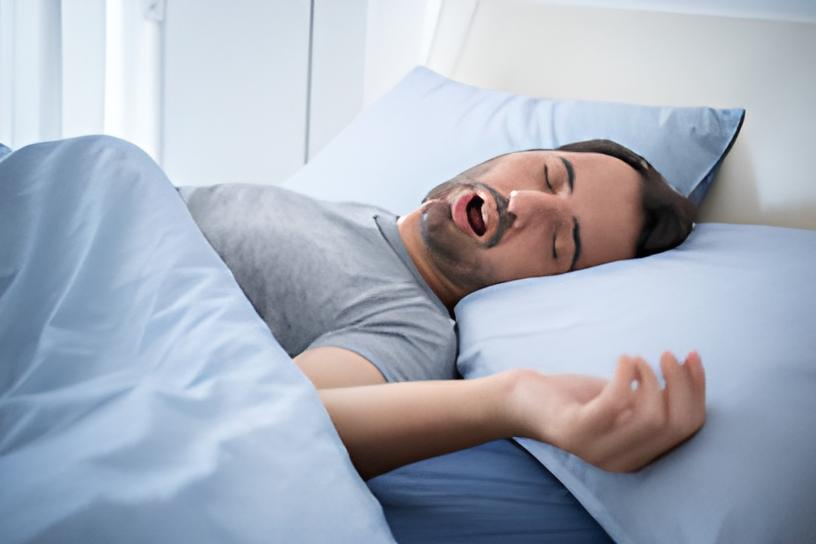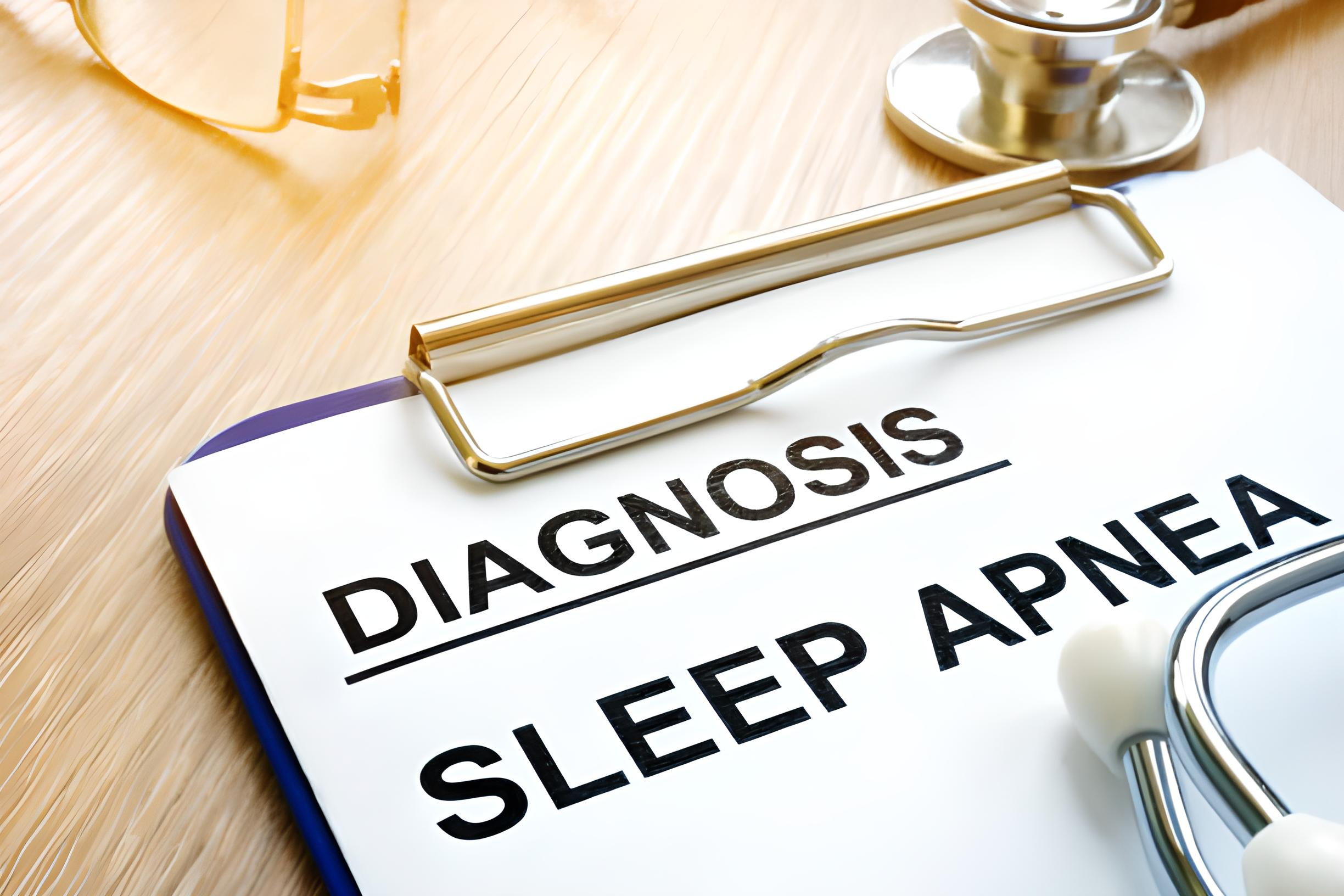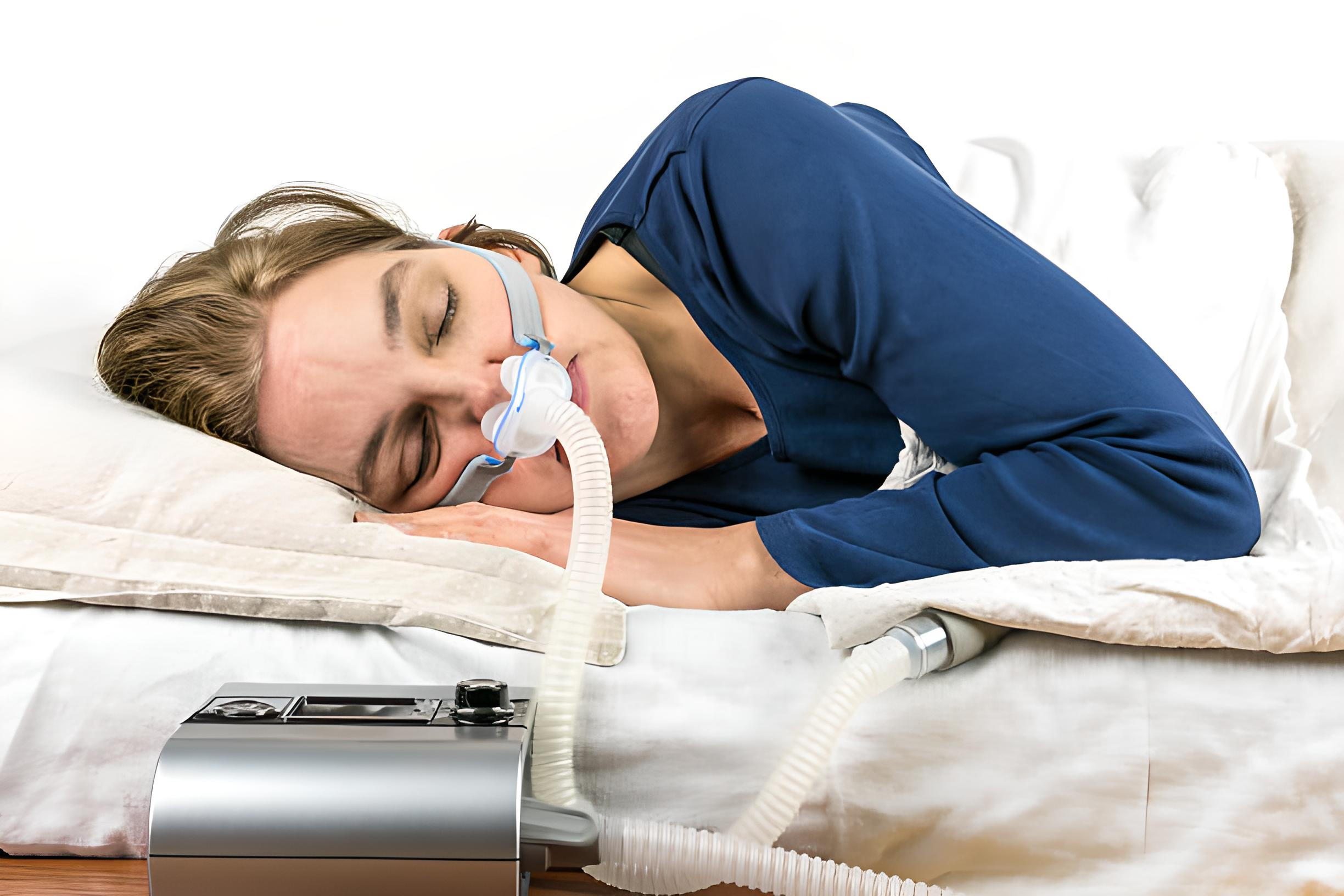Identifying your sleep apnea type is a critical step in managing its significant health impacts.
Sleep apnea, a common yet often overlooked disorder among various sleep disorders, affects millions worldwide, posing substantial risks to health and well-being. This condition, characterized by repeated interruptions in breathing during sleep, comes in various forms, each with unique challenges and implications.
In this article, we delve into the complexities of sleep apnea, aiming to provide a clear understanding of its types. We also explore how Continuous Positive Airway Pressure (CPAP) therapy, a prevalent treatment method, can be tailored to suit different forms of this sleep disorder.
Understanding Sleep Apnea

Identifying your sleep apnea type begins with understanding what sleep apnea is and how it manifests in different forms.
Sleep apnea is a sleep disorder characterized by repeated interruptions in breathing during sleep. These interruptions can last from a few seconds to minutes and often occur multiple times per hour. As a result, sleep apnea leads to fragmented, non-restorative sleep, significantly impacting overall health and quality of life.
There are three primary types of sleep apnea:
- Obstructive Sleep Apnea (OSA)
- Central Sleep Apnea
- Complex/Mixed Sleep Apnea Syndrome
Common symptoms across these types include loud snoring, a hallmark of OSA, and excessive daytime sleepiness, affecting daily functioning. It’s crucial to recognize these signs early and consider CPAP therapy for different types of sleep apnea, as timely intervention can prevent complications such as high blood pressure, heart issues, and daytime fatigue.
Diving Into Obstructive Sleep Apnea (OSA)
Obstructive Sleep Apnea (OSA) is the most common type among the various forms of sleep apnea. Obstructive Sleep Apnea occurs when the muscles in the back of the throat fail to keep the airway open, despite efforts to breathe. This leads to repeated breathing pauses during sleep, often resulting in a drop in oxygen levels and a disruption in sleep quality.
The causes of OSA are multifaceted and can include physical attributes such as a narrow airway, obesity, and enlarged tonsils or adenoids. Lifestyle factors like alcohol consumption, smoking, and the use of sedatives also play a role. Additionally, certain genetic factors and family history may increase the risk of developing OSA.
Risk factors for OSA extend beyond these immediate causes. Individuals with untreated sleep apnea, particularly OSA, often face an elevated risk of developing serious health issues, including:
- High blood pressure
- Heart disease
- Stroke
- Diabetes
Moreover, OSA can contribute to excessive daytime sleepiness, affecting one’s ability to concentrate, work efficiently, or safely operate vehicles.
Exploring Central Sleep Apnea
Central Sleep Apnea (CSA) stands distinct from Obstructive Sleep Apnea (OSA) in its underlying causes and characteristics. While OSA results from a physical blockage of the airway, CSA occurs when the brain fails to send proper signals to the muscles that control breathing. This type of sleep apnea is less about obstruction and more about communication, making it a neurological issue at its core.
The causes of Central Sleep Apnea are varied and often linked to medical conditions that affect the brain stem, which controls breathing. These can include:
- Heart failure
- Stroke
- Use of certain medications such as opioids.
Unlike OSA, CSA is less associated with physical traits like obesity or enlarged tonsils. However, it shares common risk factors with OSA, such as age and gender, with middle-aged and older adults, particularly males, being more susceptible.
Unique characteristics of CSA include episodes of stopped breathing that often result in abrupt awakenings, with a shortness of breath that is typically more pronounced than in OSA.
Unlike the loud snoring commonly associated with OSA, CSA may present with quieter sleep interruptions. Given these differences, the approach to treatment, including the consideration of CPAP therapy for different types of sleep apnea, needs to be carefully tailored to the specific needs of the individual.
Complex/Mixed Sleep Apnea Syndrome
Complex or Mixed Sleep Apnea Syndrome represents a unique challenge in identifying your sleep apnea type.
This condition is a combination of both Obstructive Sleep Apnea (OSA) and Central Sleep Apnea, encompassing elements of each. Patients with this syndrome initially exhibit symptoms of OSA, but upon receiving CPAP treatment, features of Central Sleep Apnea become apparent.
The pathophysiology of Complex Sleep Apnea Syndrome is not entirely understood, making diagnosis and treatment more intricate. It often emerges during efforts to treat OSA with CPAP therapy, whereupon central apneas (pauses in breathing not due to obstruction) manifest. This revelation can complicate treatment strategies, as standard approaches for OSA might not be effective, and additional interventions may be required to manage the central component.
Diagnosing Complex Sleep Apnea Syndrome typically involves a thorough sleep study, where detailed monitoring can reveal the presence of both obstructive and central events. Treatment is multifaceted, addressing both types of apneas. Options might include various forms of positive airway pressure therapy, adaptive servo-ventilation, or even lifestyle modifications and addressing underlying medical conditions.
Diagnosing Sleep Apnea

The journey to effectively manage sleep apnea, including determining the suitability of CPAP therapy for sleep apnea, begins with an accurate diagnosis.
Diagnosing sleep apnea is a multi-step process, usually starting with a thorough evaluation by a healthcare provider, often followed by a referral to a sleep specialist.
Initial assessment, crucial for getting severe sleep apnea diagnosed, often involves a review of medical history, physical examination, and discussion of symptoms such as loud snoring and excessive daytime sleepiness.
However, the cornerstone of sleep apnea diagnosis is a sleep study, medically known as polysomnography. This test is conducted in a sleep lab or at home and involves monitoring various physiological activities during sleep, including breathing patterns, oxygen levels, heart rate, and brain activity.
Sleep specialists play a crucial role in interpreting these results. They can distinguish between different types of sleep apnea – obstructive sleep apnea (OSA), central sleep apnea, and complex sleep apnea syndrome – based on the data. Their expertise is vital in guiding the appropriate course of treatment, whether it’s lifestyle changes, CPAP therapy, or other interventions.
Treatment Options for Sleep Apnea
The approach to treating sleep apnea varies, with options tailored to the specific needs identified in the process of identifying sleep apnea type and choosing CPAP or other treatments. While CPAP (Continuous Positive Airway Pressure) therapy is a widely recognized treatment, especially for obstructive sleep apnea (OSA), it’s not the only method available.
Non-CPAP therapies for sleep apnea can be broadly categorized into lifestyle modifications, oral appliances, and surgical options. Lifestyle changes such as weight loss, quitting smoking, and altering sleep positions can significantly alleviate symptoms in mild cases of sleep apnea. Oral appliances, designed to keep the throat open by bringing the jaw forward, can be effective for some individuals with mild to moderate OSA.
For severe cases or when other methods to treat sleep apnea have failed, surgical options may be considered. These procedures aim to remove or reduce tissue that blocks the airway or to reposition the jaw to improve airway size. Additionally, for central sleep apnea, treatments may focus more on managing the underlying conditions and using specialized forms of positive airway pressure therapy.
The Role Of CPAP In Treating Sleep Apnea

In the realm of treating sleep apnea, the role of Continuous Positive Airway Pressure (CPAP) therapy is pivotal, especially after identifying your sleep apnea type.
CPAP therapy involves using a machine that delivers a steady stream of air through a CPAP mask to keep the airway open during sleep. This treatment is particularly effective for those with severe obstructive sleep apnea (OSA), where the airway blockage is significant.
The effectiveness of CPAP in treating different types of sleep apnea lies in its ability to prevent the airway collapse that characterizes OSA. By maintaining constant air pressure, CPAP ensures uninterrupted breathing, leading to a reduction in snoring and improvement in sleep quality. For those with severe OSA, CPAP can be a life-changing treatment, significantly reducing the risk of associated health problems like high blood pressure and heart disease.
While CPAP is less commonly used for Central Sleep Apnea, it can be beneficial in some cases, particularly when combined with other treatments. The key to CPAP’s effectiveness, regardless of the sleep apnea type, is consistent use and proper fit of the CPAP device and mask.
Is CPAP Right for You?
Determining whether CPAP therapy for sleep apnea is the right choice involves several factors. While CPAP is a highly effective treatment for many, it’s not universally suitable for all types of sleep apnea, particularly milder forms.
The primary consideration in CPAP suitability is the severity of the apnea.
For individuals with severe obstructive sleep apnea (OSA), CPAP can offer significant benefits, including reduced snoring, better sleep quality, and lowered risk of associated health issues like high blood pressure. However, those with mild sleep apnea might find CPAP therapy too cumbersome or unnecessary, given their condition’s mildness.
Alternatives to CPAP for milder forms of sleep apnea include lifestyle changes like weight loss and avoiding alcohol before bedtime. Oral appliances, which reposition the jaw and tongue to keep the airway open, can also be effective. For some, simple positional therapy (changing sleep positions) can alleviate symptoms.
Consulting with a sleep specialist is crucial when deciding on CPAP usage. It’s important to consider individual needs, the type of sleep apnea, and personal comfort with the treatment.
Living With Sleep Apnea
Living with sleep apnea requires a proactive approach to manage the condition effectively. Whether you’re using CPAP therapy or other treatments, consistent adherence is key to mitigating symptoms and reducing associated health risks.
For individuals using CPAP, finding the right fit and settings is crucial for comfort and effectiveness. Regular consultations with a sleep specialist can help in adjusting the machine as needed and addressing any challenges with its use. Additionally, integrating CPAP into nightly routines and ensuring regular maintenance of the device are vital steps for successful treatment.
However, addressing sleep apnea goes beyond treatment compliance. Untreated sleep apnea, especially severe obstructive sleep apnea (OSA), can lead to serious health complications like high blood pressure and heart disease. Therefore, regular monitoring and follow-ups with healthcare providers are essential.
Equally important is maintaining healthy sleep habits. This includes establishing a consistent sleep schedule, creating a sleep-conducive environment, and avoiding habits that can exacerbate sleep apnea, such as alcohol consumption before bedtime and certain sleeping positions. For some, weight management and regular exercise can also play a significant role in reducing symptoms.
Conclusion
Navigating the complexities of sleep apnea requires both knowledge and the right tools. For those using CPAP therapy, accessing quality equipment is essential. In this regard, consider exploring Resway, a top online seller of CPAP supplies and accessories on Amazon. We offer a range of high-quality respiratory sleep products designed to enhance the comfort and effectiveness of your CPAP experience, making it more accessible and affordable.
Yet, while having the right equipment is vital, the cornerstone of managing sleep apnea effectively lies in professional consultation and personalized treatment. Each individual’s journey with sleep apnea is unique, and the most successful treatment plans are those tailored specifically to one’s needs. Engaging with a sleep specialist and regularly reviewing your treatment strategy is crucial in ensuring the best outcomes.
Remember, identifying your sleep apnea type and adopting the appropriate therapy, be it CPAP or alternative treatments, can significantly improve your quality of life. Take proactive steps towards better sleep and health, and don’t hesitate to seek the support and resources necessary for this journey.



